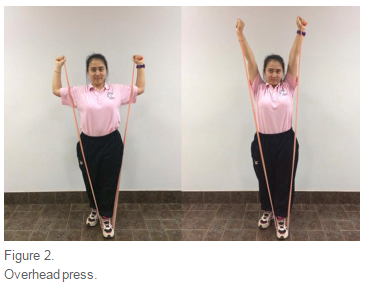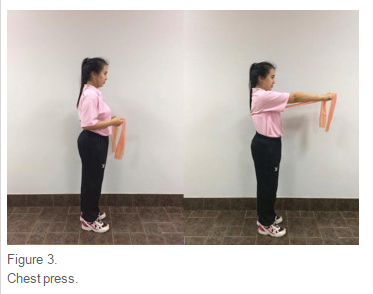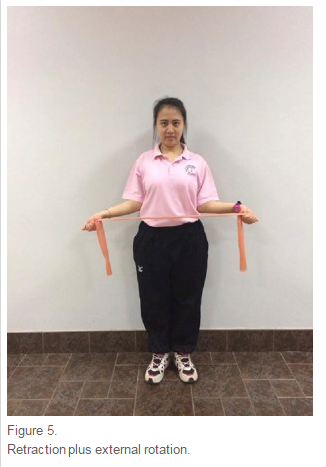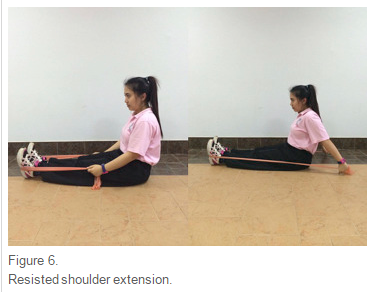First do these stretching exercises. Included 3 sets of 5 repetitions of the trapezius stretching, rhomboids stretching and posterior neck stretching. Hold each position for 20 s.
After you get stretched out, do these exercises. 3 sets of 10 reps, 3 times per week for at least 4 weeks.
Reference: Vitsarut Buttagat, B.Sc., M.Sc., Ph.D. Effects of scapular stabilization exercise on pain related parameters in patients with scapulocostal syndrome: A randomized controlled trial. Journal of Bodywork and Movement Therapies. Volume 20, Issue 1, January 2016, Pages 115–122.
Summary
The aim of this study was to evaluate the effects of scapular stabilization exercise (SSE) on pain intensity, pressure pain threshold (PPT), muscle tension and anxiety in patients with scapulocostal syndrome (SCS). Thirty-six patients were randomly assigned to receive a 30-minute session of either SSE or control (relaxed by lying supine quietly) for 12 sessions over a period of 4 weeks. Pain intensity, PPT, muscle tension and anxiety were assessed before and after a 4-week intervention period and 2 weeks after the intervention period. The adverse effects were evaluated after completion of the intervention period. Results indicated that the SSE group showed a significant improvement in all parameters after the intervention period and at 2 weeks after the intervention period (p < 0.05). For all outcomes, similar changes were not found in the control group. The adjusted post-test mean values of each assessment time point for pain intensity, muscle tension and anxiety were significantly lower in the SSE group than those of the control group (p < 0.05). Moreover, the values for PPT were significantly higher in the SSE group (p > 0.05). There were no reports of adverse effects in either group. We therefore conclude that SSE can improve pain related parameters and could be an effective intervention for SCS.





